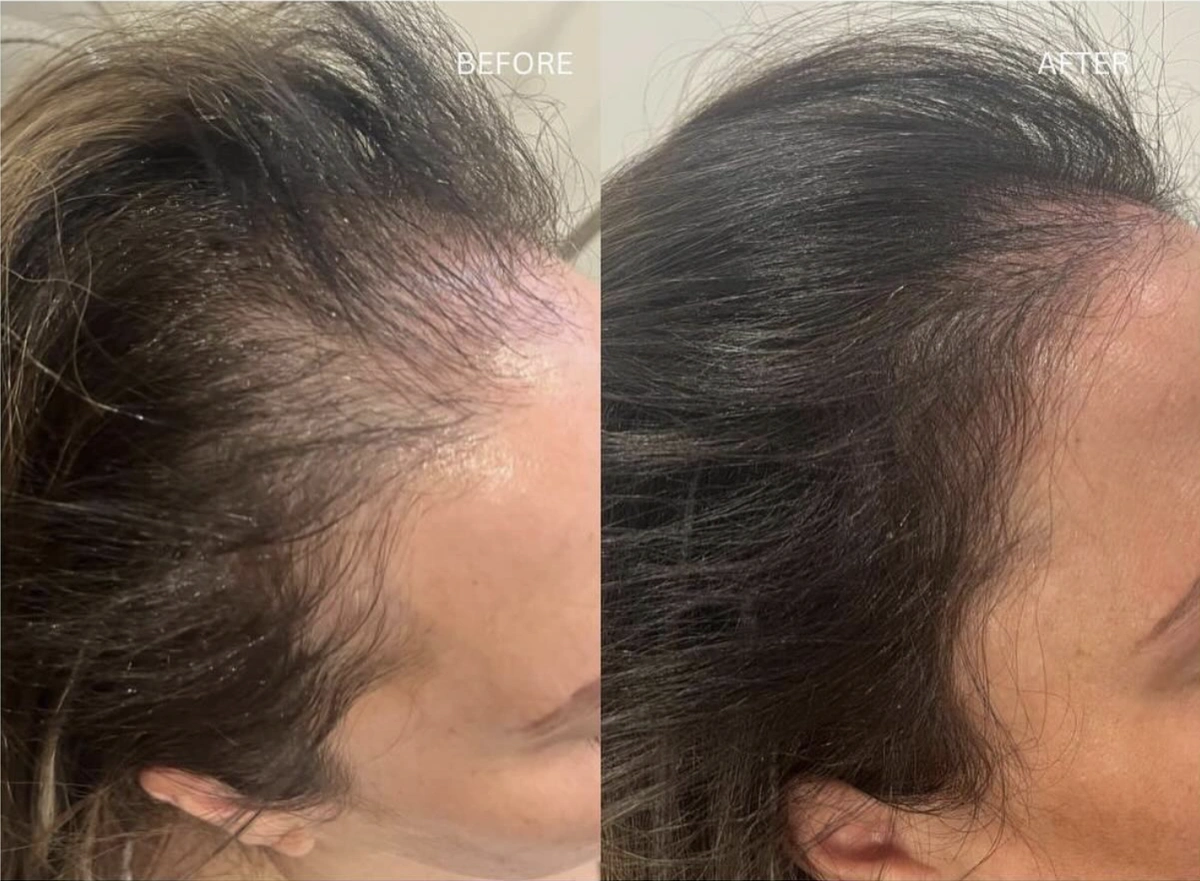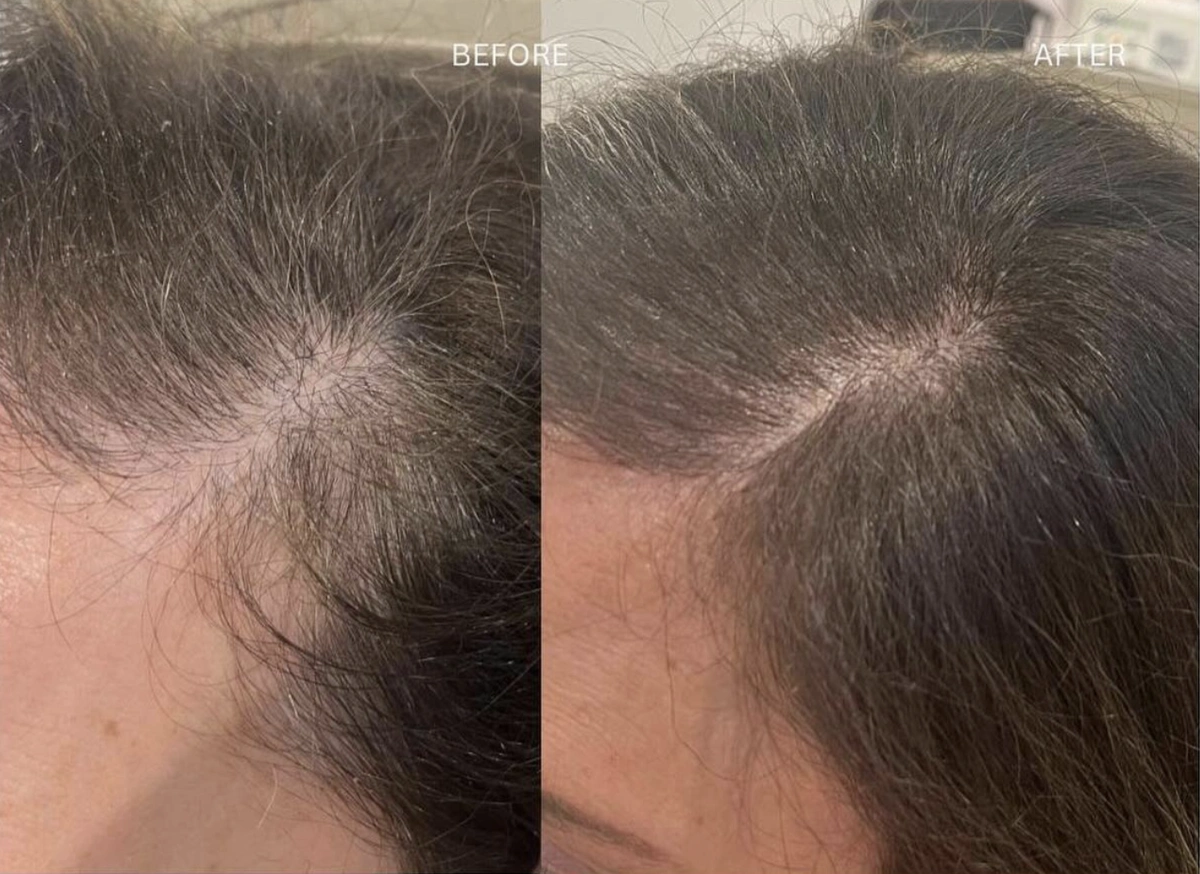
Our Service List
Hair Restoration Packages – $1499
Designed to provide your hair restoration treatment a boost, this package provides the foundation benefits of Restoration Therapy with three treatments 4-6 weeks apart. Ideal for stimulation of regrowth and increasing thickness.
Hair Restoration & Pluryal Growth Boost Package – $2199
This package duo maximizes your results by coupling Restoration Therapy with Pluryal Hair Mesoline injections. Alternating these revolutionary treatments creates a double-action effect to restore damaged hair and maximize regrowth potential to its highest degree.
Deluxe Hair Wellness Package – $2599
For those desiring a complete transformation, this premium package includes Restoration Therapy, Pluryal Hair Mesoline injections, and a series of IV drips that contain B12, Biotin, B-Complex, and Glutathione. This overall program nourishes hair from all dimensions, addressing both external and internal factors to deliver stronger, healthier, and denser hair.
Our Locations
Toronto Location
535 Queen St E #7, Toronto,
Ontario, M5A 1V1
Mississauga Location
1 Main Street, Mississauga
Ontario, L5M 1X4
Your Questions Answered:
Hair Restoration FAQ
Hair restoration refers to a range of treatments designed to improve the growth and appearance of hair. This can include surgical methods like hair transplants, or non-surgical options such as PRP (platelet-rich plasma) therapy, medications, or laser treatments. The goal is to help individuals experiencing hair thinning or loss to regain a fuller, more natural-looking head of hair.
Candidates for hair restoration generally include individuals experiencing hair thinning or loss due to genetic factors, aging, or other conditions like hormonal changes or stress. It’s best to consult with a qualified specialist to determine the most appropriate treatment for your specific needs, as results can vary depending on individual factors like hair type and the extent of hair loss.
Candidates for hair restoration generally include individuals experiencing hair thinning or loss due to genetic factors, aging, or other conditions like hormonal changes or stress. It’s best to consult with a qualified specialist to determine the most appropriate treatment for your specific needs, as results can vary depending on individual factors like hair type and the extent of hair loss.
As with any medical procedure, hair restoration treatments may come with some risks. Common side effects include mild swelling, redness, or discomfort, which typically subside within a few days.
The timeline for visible results from hair restoration varies depending on the treatment used. For surgical hair transplants, you may begin to notice new hair growth within a few months, but full results can take up to a year. Non-surgical treatments may show improvements within a few weeks, but ongoing sessions might be required to achieve optimal results. A specialist can provide a more personalized estimate based on your treatment plan.
The number of treatments varies depending on the individual’s needs and goals. Typically, 3 to 4 treatments are recommended for the best results, spaced about 4 to 6 weeks apart. After the initial series, some patients may benefit from maintenance treatments every 6 to 12 months.
Hair Restoration is suitable for individuals who are experiencing hair thinning or mild to moderate hair loss. However, it may not be effective for individuals with advanced baldness or complete hair loss, as there may not be enough active hair follicles to stimulate. A consultation with a qualified provider is important to determine if PRP is the right option for you.
After a hair restoration session, it’s important to follow any aftercare instructions provided by your practitioner. This may include:
- Avoiding direct sun exposure on the treated area for a few days.
- Refraining from washing your hair for at least 24 hours.
- Avoiding strenuous physical activity for a couple of days to minimize irritation.
- No scalp massages or aggressive brushing for a week.
Yes, hair restoration can be applied to any area of the scalp where thinning or hair loss has occurred. The most common areas treated are the crown, hairline, and temples. A personalized treatment plan will be developed based on your specific concerns.

